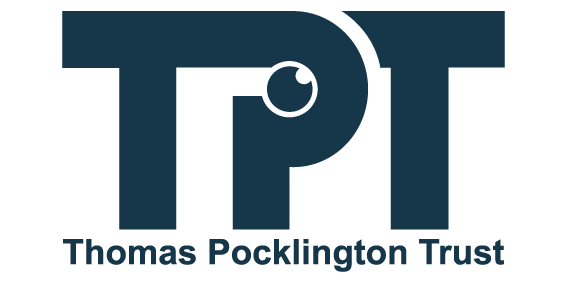Navigating a new campus can be a significant challenge for blind or partially sighted (BPS) students. Education settings are responsible for ensuring that the physical environment is accessible for disabled students (Equality Act 2010).
It is vital that education professionals take a proactive approach to making their settings inclusive for blind and partially sighted students, creating an environment which empowers them to develop independence and thrive.
The following guidance provides an overview of how the needs of BPS students can be met through conducting an environmental audit of your setting.
What is an Environmental Audit?
An environmental audit is a detailed assessment of a setting (inside and outside) which is undertaken to ensure that a setting is fully accessible for all, including BPS students, BPS staff and BPS parents/carers and any visitors.
Most improvements will involve little or no cost and are often just part of the setting’s normal health and safety.
Who Should Undertake an Environmental Audit?
Making a setting fully accessible for all is the responsibility of everyone, from site managers, staff and students. This will ensure that BPS people can move about the setting as safely and independently as possible.
An environmental audit should be undertaken by either a Habilitation Specialist or a Qualified Teacher of Vision Impairment (QTVI), with input from the setting. These professionals have expert knowledge of the considerations settings should make for BPS students.
Conducting an Environmental Audit – the Four Steps
Step One
Consider the outdoor environment:
- Are paths even and unbroken. When paths have broken pavement slabs and are uneven it will pose a significant trip hazard for a BPS person.
- Are lighting levels adequate and in working order.
- Are paths obstruction free.
- Are potential hazards highlighted e.g. pillars/bins.
- Is foliage cut back and not overhanging. BPS people may not be aware of overhanging branches; these will cause a significant hazard to not cut back.
- Are steps highlighted either with paint or a change of surface.
- Is visual information clear and accessible and eye level.
- Are doors leading in/out of buildings well contrasted.
There might be other factors to consider relating to your specific setting, so further advice may be needed.
Step Two
Think about the indoor environment (outside the classroom):
- Are stair edges highlighted.
- Are there clear, contrasting handrails which extend beyond the top and bottom.
- Are windows/doors that open outward closed.
- Are signs uniform and clear throughout the setting.
- Are doors and door handles clearly contrasted.
- Are floors matt and not shiny, avoiding glare, with good contrast. Flooring which is shiny, creates glare, which makes it harder for BPS people to navigate the setting independently.
- Is lighting in good working order.
- Are displays clear, using matt laminate.
- Are corridors/stairs free of trip hazards.
Again, there might be other factors to consider regards your setting, so seek further advice if needed.
Step Three
Think about the classroom:
- Are blinds/curtains in good working order. When curtains/blinds are not in good working order, glare can impact on how well a BPS person can see.
- Are lights in good working order.
- Are work surfaces matt and with good contrast.
- Is furniture, including chairs and cupboards well contrasted.
- Is clutter kept to a minimum.
- Are mats well contrasted and fixed.
- Are fittings e.g. gas taps, highlighted to ensure independent use.
- Is storage clear, with everything easily accessible, equipment kept in the same place.
There may well be other factors to consider regards your setting, further advice may be needed.
Step Four
Maintaining a safe and inclusive environment needs to be part of the everyday life of a setting:
- Hazards, such as spillages, need to be dealt with promptly. Spillages on the floor may not be seen by a BPS person so can represent a significant hazard.
- Broken lights, flickering lights, need to be dealt with promptly.
- Broken blinds/curtains need to be fixed promptly.
- Any changes in the setting needs to be shared.







